Intelligent Engineering
Our Intelligent Engineering solutions across products, plant and networks, combine our engineering expertise with advanced technologies to enable digital engineering & operations, develop autonomous products & platforms, and build sustainable energy and infrastructure
.png?width=774&height=812&name=Master%20final%201%20(1).png)
RF Technologies in Modern Agriculture RF technology can power precision agriculture, balance supply, and optimize resource utilization.
CyientRF Technologies in Modern Agriculture RF technology can power precision agriculture, balance supply, and optimize resource utilization..png?width=1612&height=716&name=Whitepaper-banner%20(2).png)
Abstract
Agriculture provides basic sustenance to mankind. With population explosion, the demand for food is also growing exponentially. At the same time, agriculture is a resource-intensive activity with increasing implications for the environment. Modern agriculture offers sustainable solutions with efficient farming using limited resources of water, energy, and land, yet catering to the ever increasing demand for food. Radio frequency (RF) technologies which are widely used in the defense, aerospace, and communications sectors, can play a pivotal role in providing a complete solution for modern agriculture. This white paper discusses how RF technologies can address the challenges facing modern agriculture and provides a basis for further exploration of the potential of RF technologies by R&D and data scientists.
Introduction
Modern agriculture’s key success factor is precision farming. This involves technologies for collection and analysis of data and using data to make informed decisions about planting, optimized fertilizing, and optimized irrigation.
Electronics have left their mark on precision farming in the form of various sensors and analyzers used in the field and in greenhouses. The tools and machinery that support precision farming can broadly be classified into electronics, machinery and software, and data sciences. Various sensors are deployed to measure soil, crop, and weather conditions. Other electronics help provide automation to machinery and connect it in a network, from which end users can monitor and control operations. Embedded electronics play a pivotal role in developing these sensors and electronic devices, integrating them into a network and connecting end users (farmers) to remote machines and sensors.
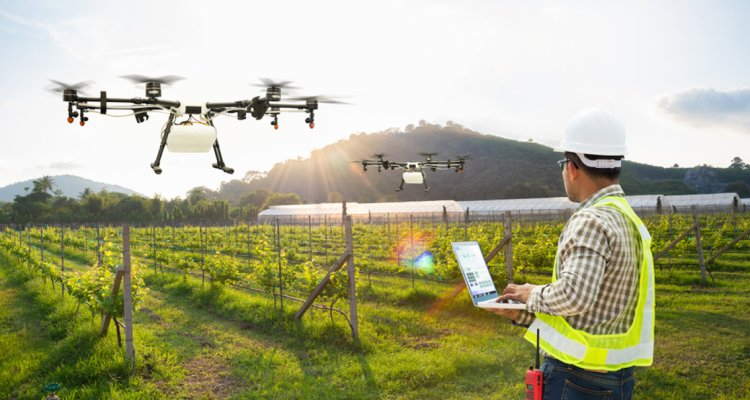
Radio frequency (RF) technology has an advantage over other embedded technologies, when it comes to all weather (e.g., cloudy atmosphere) and day/night remote monitoring of crops/soil, navigation of machinery, and the need for wireless connectivity. Using RF technologies such as radar, the condition of crops and soil can be monitored in all weather and in day/night conditions. Microwave has a heating effect at higher transmitted power and is useful in crop drying and seeding. A connected solution can be established using a radio frequency communications network to enable optimal use of sensors and machinery. Figure 1 below lists RF technologies/ equipment used in modern agriculture.
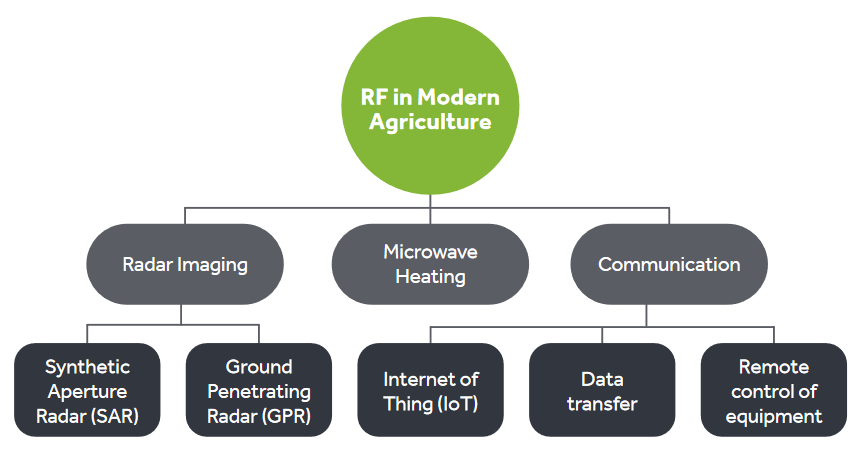
Figure 1. RF technologies used in modern agriculture
Access Whitepaper
3. Radio Waves and Their Use in Agriculture
Radio frequency signals are basically electromagnetic (EM) waves typically ranging between 3 MHz to 300 GHz (Figure 2).
Majority of radio frequency applications are spread over a frequency range of 3 MHz to 40 GHz. Higher frequencies help in providing high resolution imaging and high bandwidth communication application, whereas lower frequencies help in achieving depth of penetration in the soil for analysis and long-distance communication.
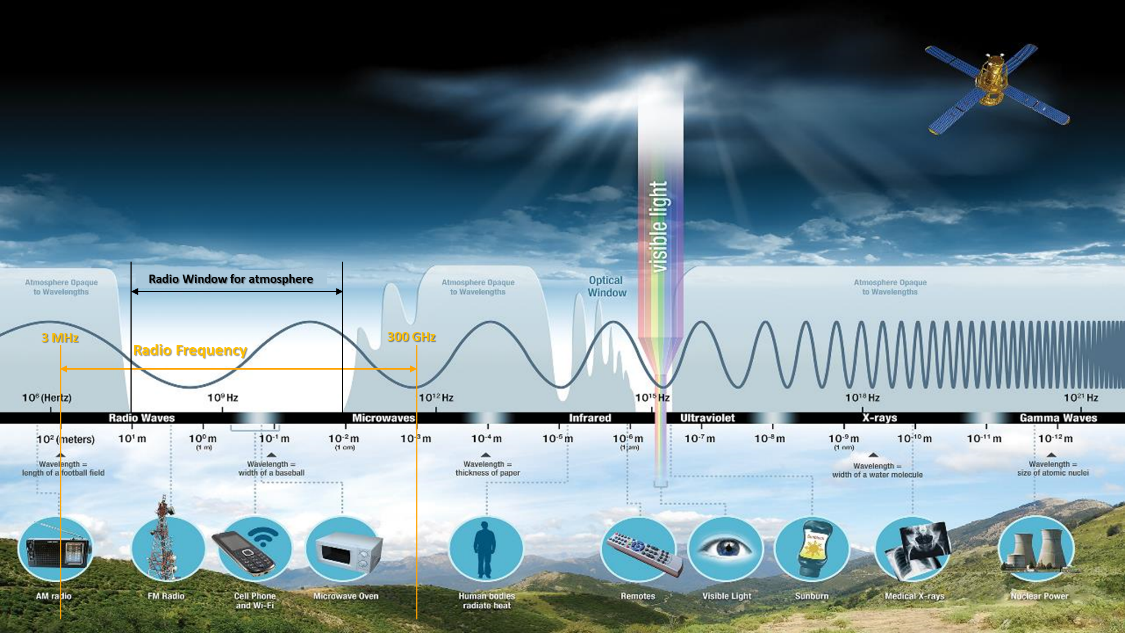
Figure 2. Electromagnetic spectrum
Effect of amplitude and phase of RF signals in agricultural applications (microwave imaging)
Radar emits RF/microwave frequencies and when directed toward the farmer’s field, a part of it is reflected back toward the radar. This is known as backscattering of electromagnetic waves. The amplitude and phase of RF signals change when reflected from different materials and is a function of crop types, crop age/conditions, soil roughness, and moisture content of the soil. By analyzing the relative amplitude and signal phases and mapping these to a calibrated set of data, data scientists can recover detailed information and present it in a readable format/image to the end user. With the advancement of RF technologies, microwave imaging is maturing, producing a camera-equivalent image and sometimes an image with more depth of information. Two types of radars are most effective in this regard. One, mounted on a flying platform such as an airplane/drone or on a satellite, is known as Synthetic Aperture Radar (SAR). The other one mainly scans over the ground or in close proximity to the ground, known as Ground Penetrating Radar (GPR).
Microwave heating
Electromagnetic fields in microwave radiation are responsible for generating heat. Polar molecules such as free water in the crops are affected by microwave radiation. The heat is typically generated in two ways: one is the friction between molecules due to their dipolar rotation (oscillation) in tune with the RF frequency and the other one is ionic conduction. In ionic conduction, free ions move through inter-molecular space to align themselves with electric fields present in microwave radiation and heat is generated due to friction among these moving ions. As the molecules and ions oscillate or move in tune with RF, electromagnetic energy present in microwave radiation is absorbed and produces heat. Microwave heating has a variety of applications such as crop drying, pest control, seeding, and more.
Communications
In communications, high frequency RF signals carry data, voice, and videos. Data, voice, or video information alters the amplitude and phase of RF signals in accordance with their content allowing them to be carried over a long distance in air on an RF signal (known as carrier in this case). Like other industries, modern agriculture depends heavily on connected solutions such as remote control of equipment, monitoring health status of equipment, and transfer of a huge amount of sensor data to the central server/end user.
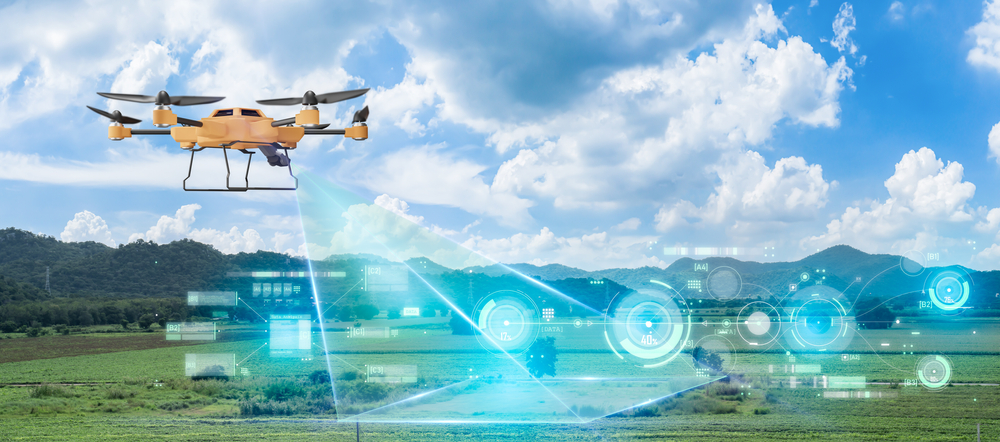
Use Cases
4. RF Technology Use Cases in Modern Agriculture
Let us take a detailed look into the use of different RF technologies in modern agriculture.
SAR-based remote sensing for crop monitoring
SAR uses electromagnetic properties such as amplitude, phase, relative amplitude, and relative phase of radio waves reflected from the crops on which it is transmitting the signal. These EM properties can be mapped to a color map to identify the type, age, and health of the crops. The airplane carrying the SAR moves in a straight line at any point of time. Hence, consecutive time of transmission/reception of Figure 3. The SAR[1] principle of operation RF pulses translates into different footprints of the antenna beam on the ground. A coherent (synchronous) combination of the received signals allows the construction of a virtual antenna aperture that is much longer than the physical antenna length, giving rise to the term “synthetic aperture” and gives the radar the property of being an imaging radar. Figure 3 represents the SAR principle of operation.
![Figure 3. The SAR[1] principle of operation-1](https://www.cyient.com/hubfs/Figure%203.%20The%20SAR%5B1%5D%20principle%20of%20operation-1.png)
Figure 3. The SAR[1] principle of operation
Different types of crops respond to different RF spectrums. For example, tall and high biomass crops like sugarcane, maize, jute, and millets respond better to a lower microwave spectrum (1-2 GHz) whereas rice and pulses (low to medium biomass crops) are responsive to a slightly higher spectrum (4-8 GHz).
![Figure 4. SAR imagery for different crop types [2]](https://www.cyient.com/hubfs/Figure%204.%20SAR%20imagery%20for%20different%20crop%20types%20%5B2%5D.png)
Figure 4. SAR imagery for different crop types [2]
Further, crops at different ages reflect RF signals differently which gives an indication of crop ages (Figure 5).
![Figure 5. SAR imagery in different life stages of a crop [3]](https://www.cyient.com/hubfs/Figure%205.%20SAR%20imagery%20in%20different%20life%20stages%20of%20a%20crop%20%5B3%5D.png)
Figure 5. SAR imagery in different life stages of a crop[3]
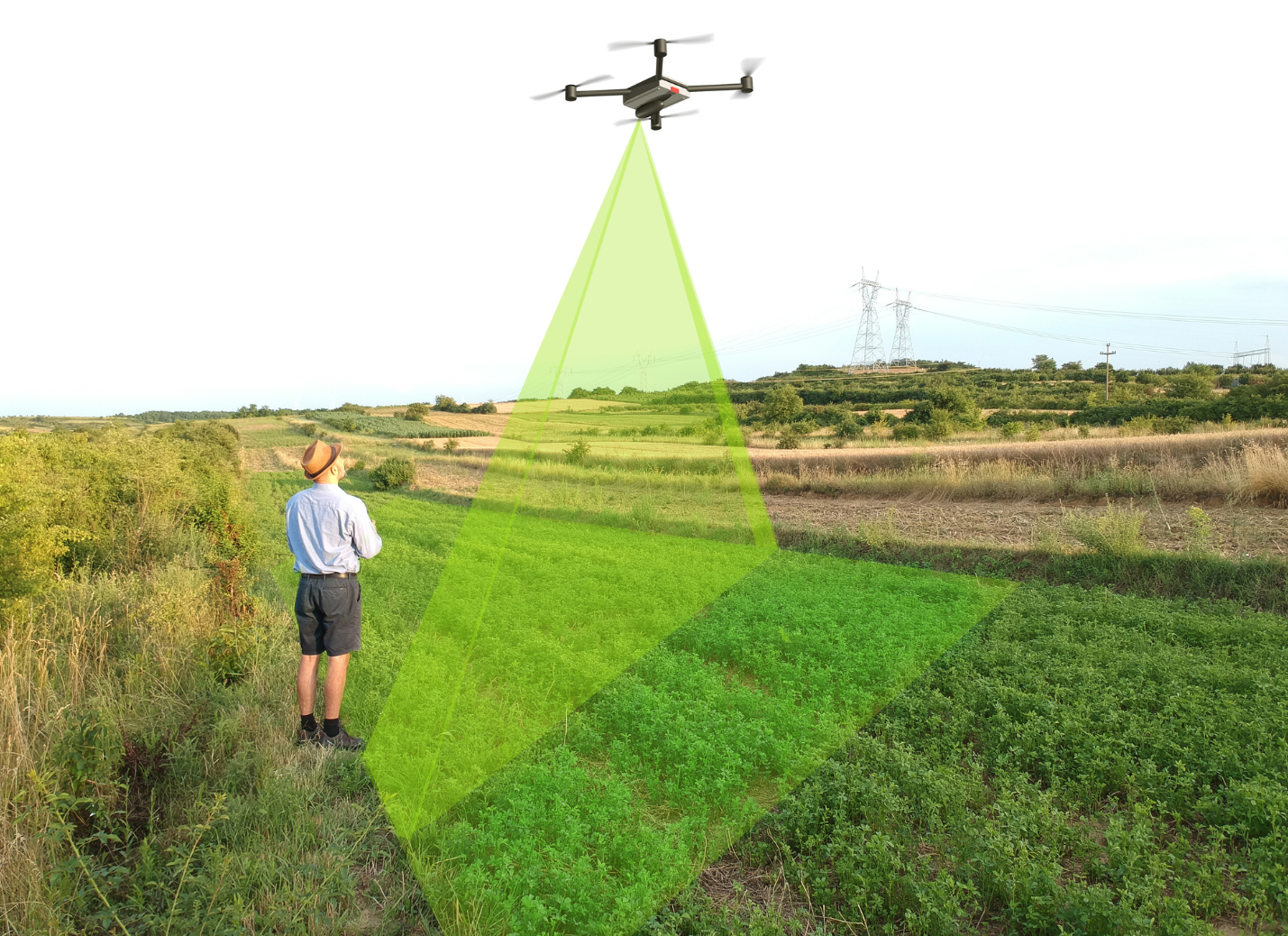
GPR-based soil study
To complement SAR usage in modern agriculture, GPR, being in closer proximity to ground, is used to study soil contents in detail. GPR sends a radio frequency signal toward the ground and part of it penetrates the ground. When the signal experiences the differences in the media, part of the penetrated signal is reflected back toward the radar and carries the relative characteristics of the media (see Figure 6(a)) . Electromagnetic properties of the signal are then mapped to an image representation with respect to survey coordinates (see Figure 6(b)). Usually, GPRs are pulled over the ground to collect data. With advancement of drones, GPRs are now being mounted on drones to provide faster mapping of large farming lands.
%20Concept%20of%20GPR%201.png)
(a)
![(b) GPR being used for soil survey [4], 2](https://www.cyient.com/hubfs/(b)%20GPR%20being%20used%20for%20soil%20survey%20%5B4%5D%2c%202.jpg)
(b)
![Figure 6. (a) Concept of GPR (b) GPR being used for soil survey [4], (c) Drone-borne GPR [5](https://www.cyient.com/hubfs/Figure%206.%20(a)%20Concept%20of%20GPR%20(b)%20GPR%20being%20used%20for%20soil%20survey%20%5B4%5D%2c%20(c)%20Drone-borne%20GPR%20%5B5.png)
(c)
Figure 6. (a) Concept of GPR[4] (b) GPR being used for soil survey [4], (c) Drone-borne GPR [5]
Using the EM properties of reflected signals and corresponding mapping to images, different layers of soil and their spatial distribution can be estimated with centimeter accuracy. These characteristics may be due to the lithology of the soil or due to presence of moisture, pollutants, agrochemicals. An example is shown in the figure below.

Figure 7. GPR imagery of soil: (a) Initial condition, (b) With movement of agrochemical agents [6]
Microwave heating
Studies have indicated the effectiveness of microwaves in drying material with water content and this property is useful in drying crops faster as compared to the conventional convection method. The role of microwave heating in pest control dates back nearly 70 years where lethal exposure of insects to a 12 MHz electric field was demonstrated. Recent experiments show that insects infesting dry products are quickly affected by microwave energy as the water content in their body gets heated. An application of microwave with controlled transmitting power helps in germination of seeds. Studies have shown that the use of microwaves during drying can be safe in seeds of soybeans, corn, and beans, among others. Many studies recognize that drying using microwaves has great potential as it reduces the drying time considerably. Other applications of microwave heating include microwave-assisted bio-fuel extraction and microwave-assisted pyrolysis (to convert biomass to an intermediate liquid product that can be refined to drop in hydrocarbon biofuels, oxygenated fuel additives, and petrochemical replacements).
RF communications in agriculture
Majority of the RF sensors described above are mounted either on airborne platforms or on a ground vehicle. Drones are the latest, most popular, and inexpensive airborne platform as compared to others. Drones are required to be controlled remotely using wireless technologies. A robust and long- distance RF communications system needs to be established for controlling and operating the drones as desired.
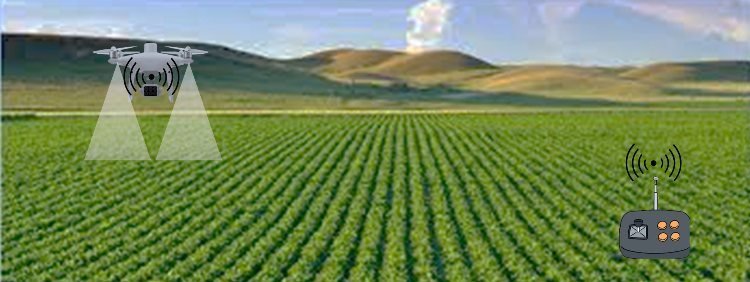
Figure 8. Remote-controlled drone for agriculture
With the advancement of technology, agricultural vehicles are adopting autonomy in their operations. The key elements of success for this are RF communications equipment and network infrastructure for a connected vehicle.
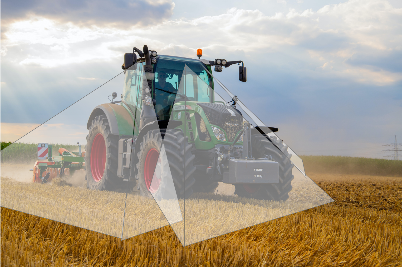
Figure 9. Agriculture vehicle with autonomy
5G technology in agriculture
The advent of 5G technology will revolutionize global farming landscapes and will open up multiple ways to establish and grow precision farming. The figure below shows that every element in modern agriculture once connected to a high speed and high throughput 5G cellular network, works in tandem with the other to optimize resources and maximize yield. The imagery generated from SAR and GPR demand throughput for transferring them to a distant and central location/data cloud. Similarly, to control farming equipment remotely, a low latency communications network in inevitable.
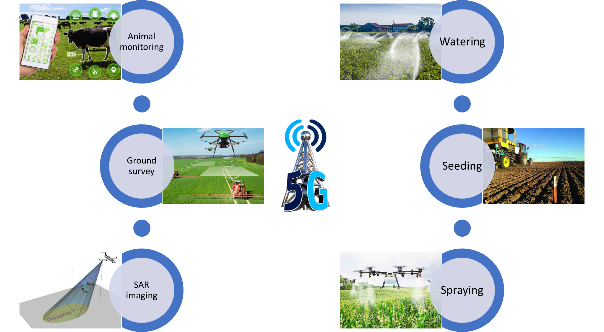
Figure 10. Uses of 5G technology in agriculture
Internet of Thing (IoT) in agriculture
Agriculture, like other industries, has been quick to utilize IoT for smart farming. IoT connects sensors for monitoring soil parameters, plants, weather, livestock, etc. using a smartphone over the Internet. Thus, farmers get access to the information at different levels, such as soil analysis and mapping, irrigation, fertilizers and pesticides, disease detection, harvesting and yield prediction, and monitoring [7].
A major success factor for IoT in agriculture is the availability of ultra- small communications terminals, small enough to fit in wearables and small gateways used for livestock monitoring. Satcom equipment manufacturers are in the process of developing ultra-small terminals/modems.
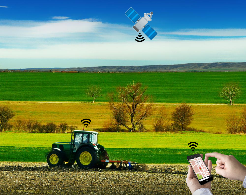
(a)
%20IoT%20in%20agriculture%2c%20(b)%20Compact%20devices%20for%20satellite-based%20IoT.png)
(b)
Figure 11. (a) IoT in agriculture, (b) Compact devices for satellite-based IoT
5. Cyient’s Approach
As a technology enabler and solutions provider, Cyient works closely with industry experts to understand their concerns and challenges. With the vision of Designing Tomorrow Together, we enable our customers to apply technology imaginatively across their value chain to solve problems that matter. We aim to provide sustainable solutions and facilitate the adoption of disruptive technologies to conserve valuable resources. Cyient has decades of experience in helping customers worldwide to research, deploy, integrate, migrate, and support different embedded applications, communications networks, and RF technologies.
Sustainability is one of our key focus areas. The aim is to bring out solutions to optimize the use of resources and cater to the growing needs of the society. Technologies such as connectivity, IoT, and smart technologies play an important role in sustainability by reducing carbon footprints. Precision agriculture is one of the areas where embedded technologies such radio frequency technologies have immense potential to bring out solutions for a more sustainable future.

Conclusion
A global revolution is underway in agriculture. Enormous amounts of research is in progress to develop more advanced technologies to enable new features of modern agriculture/smart farming. We will see the advances in near range and long-distance communications, higher precision SAR and GPR data generation, compact and low- cost electronic devices using system-on-chip (SoC), and fully autonomous vehicles/ equipment for faster and higher throughput.
About the Author
Ranadeep Saha is an electronics and communications engineer with specialization in microwave and radar technologies and systems. He has over 20 years of industry experience in microwave and radar system research, design, and development. He has primarily worked in design and development of radars and other microwave systems for detection, sensing, and tracking, moving from design engineer to function lead to R&D head for radars. He has extensive experience in the application of microwave and radar technology in defence, space, and other industrial domains.
References
[1] Alberto Moreira, Pau Prats-Iraola, Marwan Younis, Konstantinos Papathanassiou, A Tutorial on Synthetic Aperture Radar
[2] Mishra, D., Pathak, G., Singh, B.P. et al. Crop classification by using dual-pol SAR vegetation indices derived from Sentinel-1 SAR-C data. Environ Monit Assess 195, 115 (2023). https://doi. org/10.1007/s10661-022-10591-x
[3] C. Patnaik, Radar Remote Sensing in Agriculture
[4] Federico Lombardi, ORCID,Bianca Ortuani, Arianna Facchi and Maurizio Lualdi, Assessing the Perspectives of Ground Penetrating Radar for Precision Farming, Remote Sens. 2022, 14(23), 6066; https://doi.org/10.3390/rs14236066
[5] Kaijun Wu, Gabriela Arambulo Rodriguez, Marjana Zajc, Elodie Jacquemin, Michiels Clément, Albéric De Coster, Sébastien Lambot, A new drone-borne GPR for soil moisture mapping, Remote Sensing of Environment, Volume 235, 2019, 111456, ISSN 0034-4257, https://doi.org/10.1016/j. rse.2019.111456
[6] Aleksandar RISTIĆ, Dušan PETROVAČKI, Miro GOVEDARICA, Radar remote sensing technologies – the usage in Agriculture, Journal on Processing and Energy in Agriculture, 14 (2010)
[7] Yu Tang, Sathian Dananjayan, Chaojun Hou, Qiwei Guo, Shaoming Luo, Yong He, A survey on the 5G network and its impact on agriculture: Challenges and opportunities, Computers and Electronics in Agriculture, Volume 180, 2021, 105895, ISSN 0168-1699, https://doi.org/10.1016/j.compag.2020.105895
About Cyient
Cyient (Estd: 1991, NSE: CYIENT) is a global Engineering and Technology solutions company. We collaborate with our customers to design digital enterprises, build intelligent products and platforms and solve sustainability challenges. We are committed to designing tomorrow together with our stakeholders and being a culturally inclusive, socially responsible, and environmentally sustainable organization.
For more information, please visit www.cyient.com